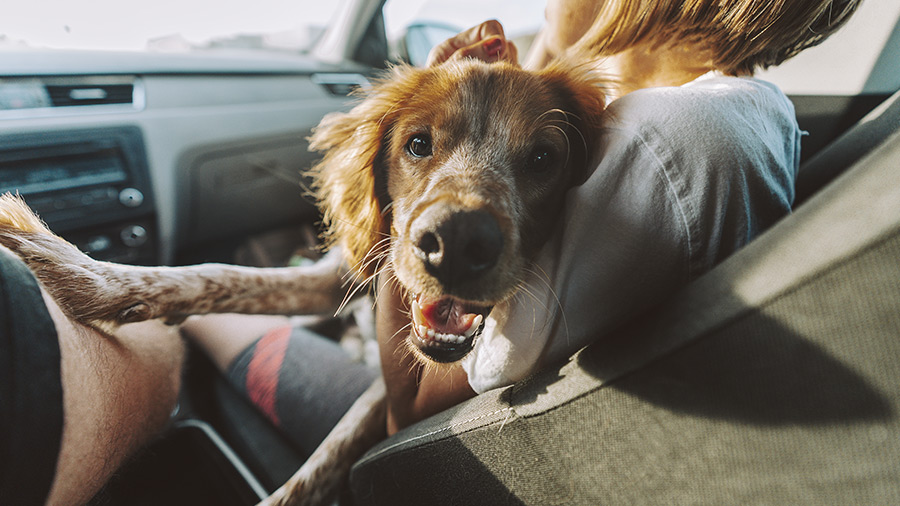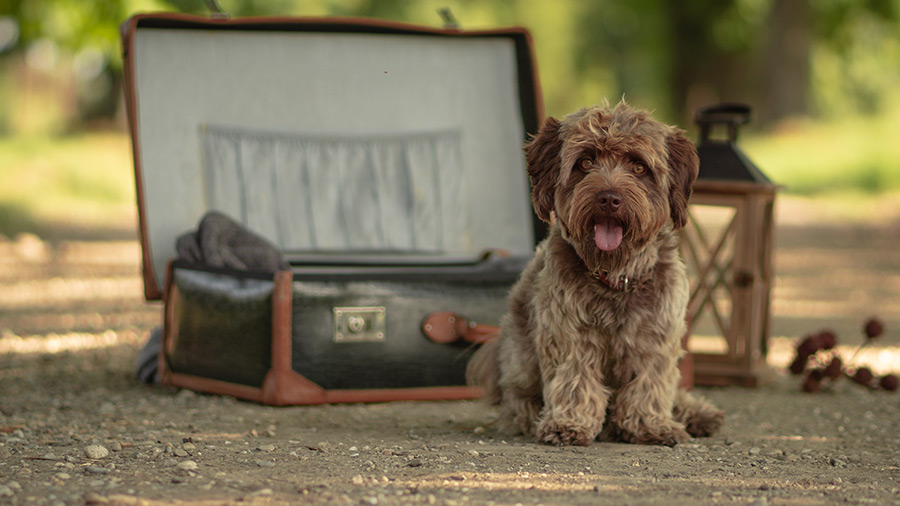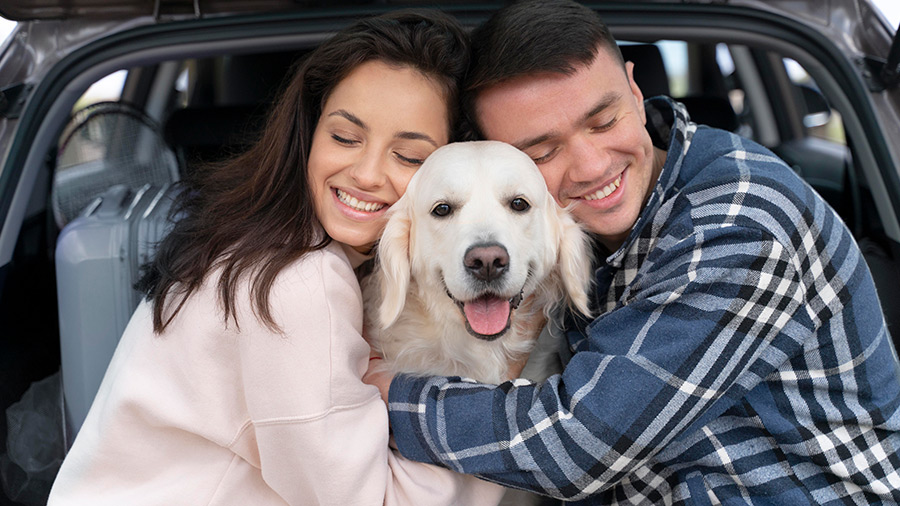
7 Tips For Moving With An Anxious Dog
For some, there is nothing more enjoyable than being a dog owner. In fact, so many people enjoy having a pet as a companion that nearly 48 million households in the U.S. own a dog. However, despite the many joys of having a dog by your side, pet ownership is not always easy.
While some dogs are easy to care for, others can be more difficult to handle, such as those with anxiety. Even a typically fun situation can be problematic and highly stressful for an anxious dog. So, of course, inherently stressful situations will be even harder for an anxious dog to handle—like moving to a new home.
Moving can be stressful for everyone, not just anxious pets. But the process of moving when you do have a dog with anxiety can be even more challenging and so much more stressful, which is why it’s important to take extra care to make the move go as smoothly as possible for you and your pet.
In this article, we’ll discuss how to recognize the signs of an anxious dog and tips for how to help your pet feel more comfortable during the move.

Recognizing Signs of Anxiety in a Pet
While some dogs inherently have anxiety and might feel more stressed than most in any situation, some things can specifically trigger anxiety in an otherwise happy pet. For example, your own behaviors and lifestyle can cause your dog to develop stress.
A dysfunctional home that is often filled with tension and bad attitudes can trigger stress and anxiety in your dog. They can also become stressed and overwhelmed by poor training techniques, such as inconsistencies in your training methods. If you are always busy and don’t have time to play with them and take them out to exercise, this can also result in an anxious dog.
Another lesser-known anxiety trigger for pets is clutter. Just as people tend to feel more relaxed in a clean and organized home, so do dogs. Animals do not like to live and sleep in messy places, so getting rid of clutter is a good way to help them feel more at ease.
Of course, stressful events such as going to the vet or moving to a new home can also trigger anxiety, or they can make an existing anxious temperament worse. Either way, whether a behavior, lifestyle or a specific event is causing your dog’s anxiety, the first step to calming an anxious pet is learning to recognize the signs of stress and anxiety.

Signs of anxiety in a dog can include:
- Restlessness
- Panting
- Excessive drooling
- Constant barking or whining
- Ears tilted back
- Shaking and trembling
- Tucked tail
- Disinterest in food
- Potty accidents
- Chewing things and other destructive behaviors
- Hiding or cowering
- Sudden aggression and biting
- Low energy
- Fearful behaviors and attempting to escape
Moving Tips for Pet Owners with an Anxious Dog
Whether you have an anxious dog or not, there are some steps all dog owners should take when moving with a pet, such as making sure you have all of their essentials, getting them registered for new tags if moving to a new city, making sure they are safely and comfortably secured while traveling, and giving them anti-nausea meds if needed for car sickness.

More specific and helpful tips for moving with an anxious dog include:
- Taking your dog to visit the new home before moving day. It’s helpful to first familiarize your pet with a new space instead of suddenly forcing it upon them last minute. So if possible, take a couple of visits to your new home before the move and let your dog walk around and sniff it out to grow accustomed.
- Bringing lots of toys and treats. During initial visits and on the day of the move, make sure your dog has access to some of their favorite toys and perhaps even a new one, as well as some treats. This will help them create a more positive connection with experience and give them something to distract them.
- Familiarizing them with moving supplies. Often, people will keep their dogs locked up while packing and moving to keep them out of the way, but this can feel like punishment to them and trigger negative feelings associated with the move. Instead, let them sniff around while you pack and try packing up their stuff and their comfort area last.
- Creating a safe, comforting space. When you do make the move, set your dog’s stuff up first to give them a comforting area to retreat to while you are unpacking. This can be a corner of a room that is out of the way but still offers them a view of the action, or you can create a cozy and fun pet room just for them while they adjust.
- Giving your dog lots of love and attention. It’s easy to get caught up with the packing and the unpacking, but try to take breaks now and then to give your dog some attention. Make sure to take them outside as well for potty breaks and to let off some stress running around or playing with a ball.
- Creating a safe and fun outdoor space. If you have a yard, creating a safe, fenced-in area for your dog to play can also help them better adjust to the new move. Keeping them cooped up inside or letting them out into a new area that is stressful or unsafe can make their anxiety worse.
- Staying home with them as much as you can. After the move, it is helpful to make sure you have some time to stay home with the dog as much as possible at first before returning to work. Dropping them in a new space and then leaving them alone a lot can be incredibly stressful. So give them some time to adjust and familiarize themselves before you start constantly going out.
Wrapping Up
Each dog is different, and as their owner, you should be most familiar with what will work best for them. Still, it’s a good idea to take extra precautions and put in potentially more effort than usual to make your anxious dog feel as safe and calm as possible during a move. Remember, we all feel stressed during a move, so it’s important to follow the above tips to make the process go as smoothly as possible for both you and your pet.










